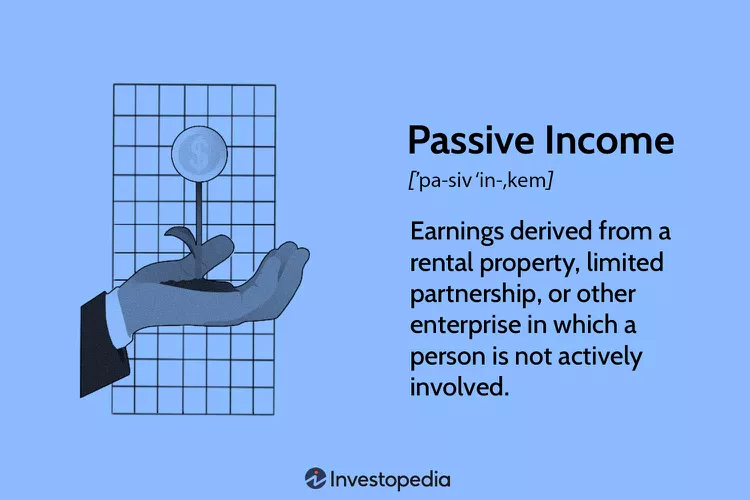Table of Contents
In today’s fast-paced world, the idea of earning money while you sleep is incredibly appealing. This concept, known as passive income, has gained immense popularity as people seek financial independence and freedom from the traditional nine-to-five grind. Unlike active income, where your earnings are directly tied to the hours you work, passive income allows you to generate revenue with minimal ongoing effort. This can free up your time to pursue other interests, travel, or simply enjoy life more.
Passive income is not a new concept. For centuries, individuals have sought ways to earn money without constant labor. Landowners collected rent, inventors received royalties, and investors earned dividends. Today, the digital age has expanded the possibilities for generating passive income, making it more accessible than ever before. With a myriad of options available, from real estate investments to digital product creation, there is a passive income stream suitable for nearly everyone.
What is Passive Income?

Passive income is earnings derived from rental property, limited partnerships, or other enterprises in which a person is not actively involved. It contrasts with active income, such as wages or salaries, where there is a direct trade of time for money. The key advantage of passive income is the ability to generate money without continuous effort, allowing for greater financial freedom and the opportunity to pursue other interests.
Benefits of Passive Income
- Financial Freedom: Passive income can help you achieve financial independence by providing additional cash flow, reducing reliance on a single income source.
- Time Flexibility: With passive income, you can free up time to focus on other activities, whether it’s starting a new business, traveling, or spending time with family.
- Diversification: Having multiple income streams can protect you against financial instability if one source of income is affected.
- Scalability: Many passive income streams can be scaled up, increasing your earnings without a proportional increase in effort.
Popular Passive Income Streams
1. Real Estate Investments
Real estate is one of the most common and lucrative passive income streams. By purchasing rental properties, you can earn a steady income through tenant rent payments.
Getting Started:
- Research: Understand the local real estate market and identify promising areas.
- Financing: Secure financing through savings, loans, or investors.
- Property Management: Decide whether to manage the property yourself or hire a management company.
Challenges:
- Initial Capital: High upfront costs can be a barrier.
- Maintenance: Ongoing maintenance and tenant issues can require time and money.
2. Dividend Stocks
Investing in dividend-paying stocks allows you to earn regular income from your investments. Dividends are payments made by companies to their shareholders, usually on a quarterly basis.
Getting Started:
- Research: Identify stable companies with a history of paying dividends.
- Invest: Purchase shares through a brokerage account.
- Reinvest: Consider reinvesting dividends to compound your returns.
Challenges:
- Market Risk: Stock prices can fluctuate, affecting your overall returns.
- Dividend Cuts: Companies can reduce or eliminate dividend payments during financial difficulties.
3. Peer-to-Peer Lending
Peer-to-peer (P2P) lending platforms connect borrowers with investors, allowing you to earn interest on loans you provide.
Getting Started:
- Choose a Platform: Select a reputable P2P lending platform.
- Diversify: Spread your investments across multiple loans to mitigate risk.
- Monitor: Keep an eye on loan performance and reinvest returns.
Challenges:
- Default Risk: Borrowers may default on loans, leading to potential losses.
- Regulation: P2P lending is subject to regulatory changes that can impact returns.
4. Creating and Selling Digital Products
Digital products, such as eBooks, online courses, and software, can generate passive income once created.
Getting Started:
- Identify a Niche: Find a topic or problem you can address with your product.
- Develop: Create high-quality content or software.
- Market: Use online marketing strategies to reach your target audience.
Challenges:
- Initial Effort: Significant time and effort are required to create a valuable product.
- Competition: The digital marketplace can be competitive, requiring ongoing marketing efforts.
5. Affiliate Marketing
Affiliate marketing involves promoting products or services and earning a commission for each sale made through your referral.
Getting Started:
- Choose a Niche: Focus on a specific area where you have expertise or interest.
- Join Programs: Sign up for affiliate programs relevant to your niche.
- Create Content: Develop content that promotes the affiliate products.
Challenges:
- Traffic: Building an audience or website traffic takes time and effort.
- Commission Rates: Commissions can vary widely depending on the program.
6. Investing in REITs (Real Estate Investment Trusts)
REITs allow you to invest in real estate without owning physical properties. They are companies that own, operate, or finance income-producing real estate.
Getting Started:
- Research: Look for REITs with strong performance and dividend history.
- Invest: Purchase shares through a brokerage account.
- Diversify: Consider investing in different types of REITs (e.g., residential, commercial).
Challenges:
- Market Volatility: REIT prices can fluctuate based on market conditions.
- Fees: Some REITs have management fees that can impact returns.
7. High-Yield Savings Accounts and CDs
High-yield savings accounts and certificates of deposit (CDs) offer interest rates higher than traditional savings accounts.
Getting Started:
- Compare Rates: Look for banks offering competitive interest rates.
- Deposit Funds: Open an account and deposit your savings.
- Lock-In Period: For CDs, be aware of the lock-in period and penalties for early withdrawal.
Challenges:
- Low Returns: While safer, the returns are generally lower compared to other investment options.
- Inflation Risk: Interest rates may not keep up with inflation, reducing purchasing power.
8. Automated Online Businesses
Creating an online business that runs with minimal involvement, such as dropshipping or print-on-demand, can generate passive income.
Getting Started:
- Choose a Model: Decide on the type of business (e.g., dropshipping, print-on-demand).
- Set Up: Create an online store using platforms like Shopify or WooCommerce.
- Automate: Use automation tools for order processing, inventory management, and customer service.
Challenges:
- Setup Effort: Initial setup and marketing require time and resources.
- Competition: The online business space can be highly competitive.
Tips for Building Passive Income Streams
- Start Small: Begin with one or two income streams and gradually expand as you gain experience.
- Diversify: Spread your investments across different passive income streams to reduce risk.
- Reinvest: Reinvest earnings to compound your returns and grow your income.
- Stay Informed: Keep up-to-date with market trends and new opportunities.
- Be Patient: Building substantial passive income takes time and consistent effort.
Conclusion
Building passive income streams can provide financial stability, freedom, and the ability to pursue your passions without being tied to a traditional job. Whether through real estate, dividend stocks, digital products, or other methods, there are numerous opportunities to create a steady cash flow. By diversifying your income sources and staying committed, you can achieve a sustainable and rewarding passive income portfolio.

